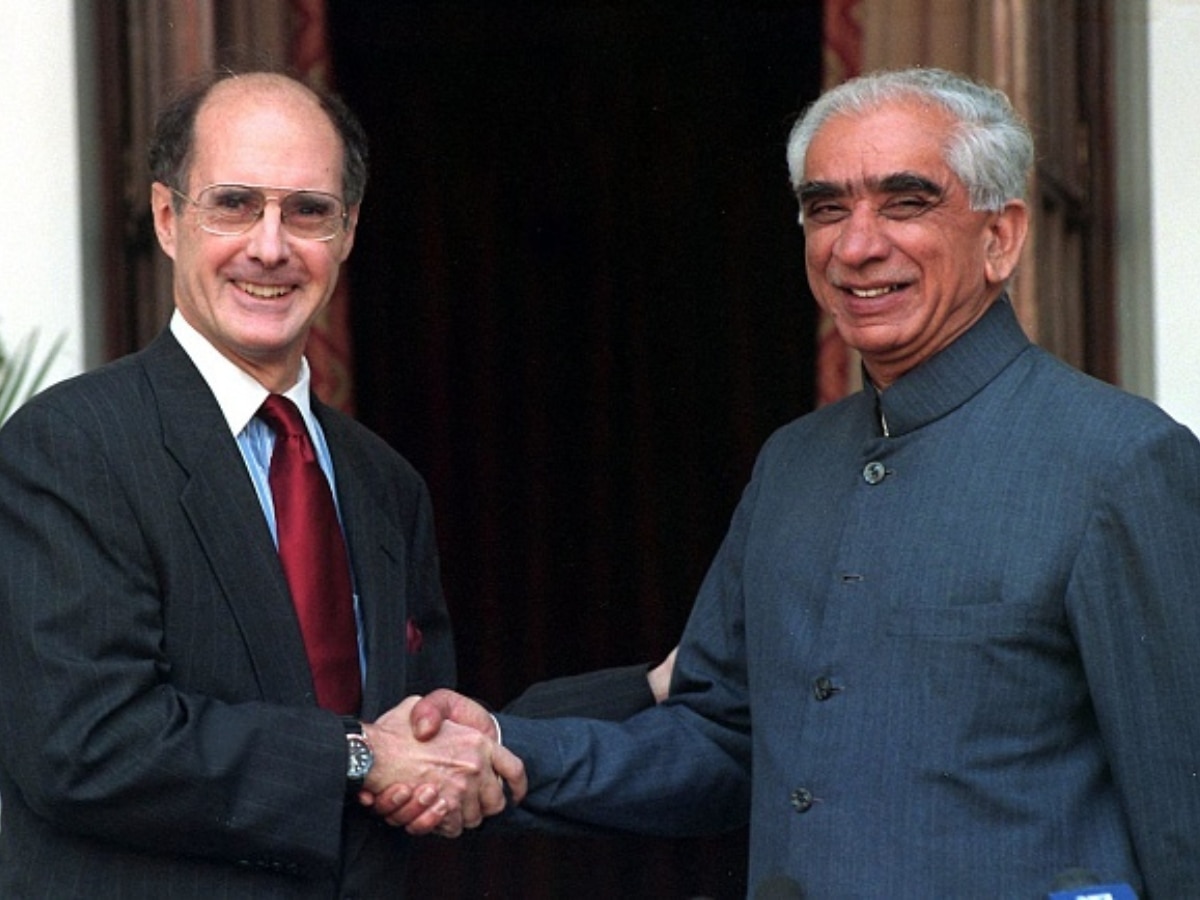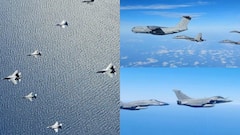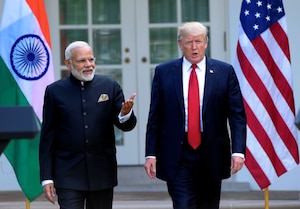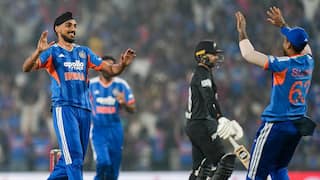India And US: A G-2 For Indo-Pacific In Making? Jaswant Singh, Strobe Talbott Did The Groundwork Over 2 Decades Ago
Read how Strobe Talbott-Jaswant Singh dialogue resulted in reconciliation after India-US ties deteriorated in the aftermath of America imposing sanctions in response to 1998 nuclear tests by India.

If the Biden-Modi summit on June 22 has succeeded in taking the India-US global strategic partnership to a "limitless sky", further solidifying the bilateral relationship and almost attaining ally-like ties, the credit should go to the then US deputy secretary of state Strobe Talbott and India's former external affairs minister Jaswant Singh, who recommended measures for reconciliation in the aftermath of the US imposing sanctions in response to the 1998 nuclear tests by India. Two and a half decades later, the relationship has now been brought to an unimaginable level, generating envy amid deepening animosity in India’s northern neighbour China and western neighbour Pakistan. The exhaustive 58-point joint statement issued after the Biden-Modi White House meet displays the level of mutual trust both countries have now achieved. It would not be an exaggeration to say that the era of mutual suspicion in India-US relations, since the decade of sixties, have now been totally overturned into an era of mutual trust between two “estranged democracies”.
Immediately after the May 1998 nuclear and hydrogen bomb testing in Pokharan, which evoked worldwide anger against India, drew the ire of US administration, which felt flabbergasted as India challenged the nuclear might and monopoly of the United States besides other UNSC members China and the United Kingdom. France and Russia had then kept mum and did not join the international technology and economic sanctions unilaterally imposed on India that had severely hurt Indian economy. Indian scientists and researchers were thrown out of the US and a ban was imposed on Indian scientists' travel to the country for even participating in international seminars and meetings. The then US administration had even decided to stop the sale of GE-404 engine for LCA Mk-1. But two and a half decades later, the US administration has agreed to transfer of technology for a more advanced GE-414 jet engine to Hindustan Aeronautics Limited (HAL), the Indian military aviation behemoth.
ALSO READ | US-India Defence Ties To Witness ‘Unprecedented Co-production, Tech Transfer’ Plans
Strobe Talbott-Jaswant Singh Dialogue
Amid deteriorating ties, then US President Bill Clinton had offered to conditionally negotiate with India by the end of 1998, the year of Indian nuclear defiance, to check further slide in the relationship. For this, he nominated Strobe Talbott, the then deputy secretary of state. Three days later, then Indian Prime Minister Atal Bihari Vajpayee, who had dared to gatecrash the exclusive club of nuclear powers, nominated his close confidant and then Planning Commission deputy chairman Jaswant Singh, who was also the external affairs minister.
Singh played a stellar role in clearing the cobwebs in the mindset of US officials regarding India. Since then, the relationship kept evolving and deepening, on the back of which current US President Joe Biden and PM Narendra Modi were able to build this strong "partnership", for which Modi said "even sky isn't the limit". The relationship today has generated mutual confidence and bipartisan support in each country’s domestic constituencies, on each other’s ability and will to support each other to meet the various strategic and economic challenges both countries face together.
Talbott, a diehard opponent of India’s nuclear programme, had expressly told Jaswant Singh if India wanted American and Western sanctions to be lifted it must adhere to the Comprehensive Test Ban Treaty (CTBT) and shun its ballistic missile programme. India had refused to give credence to the CTBT regime, calling it discriminatory and similar in nature to NPT that it has refused to sign.

Singh engaged himself in this tough dialogue with full seriousness and sincerity, which was instructed to be held behind the camera. This closed-door dialogue helped him to indulge in free, frank, friendly and candid discussions with Strobe Talbott, who sat on the talks table with a closed mind. Though Singh very hesitantly conceded the US demand to agree to the CTBT (which was eventually not accepted by the Vajpayee government), initially declined by India during the 1996 CTBT conference, after hard bargaining and persuasion he was able to convince Talbott on the strategic necessity of possessing a deterrent capability to check strategic ambitions of China. In fact, after the May 1998 nuclear tests, PM Vajpayee had written a letter to President Clinton, explaining the raison d'être of the nuclear tests, which was later deliberately leaked to the US press, causing much embarrassment in Raisina Hills.
Jaswant Singh flatly refused to roll back India’s nuclear weapons and missile programme. As many as 14 rounds of dialogue were held at a breakneck speed within a span of two and half years in seven countries and ten cities, including Washington, London, Singapore and New Delhi. The dialogue focussed not only on Indian strategic nuclear and missile programme but taking measures to deepen economic ties. After the talks, the suspended Malabar naval exercise that was initiated in 1992 recommenced in 2002 and the Defence Policy Group set up in 1995 during the visit of William Perry, the then US secretary of defence, was revived and military-to-military interactions and exchanges were initiated. The then US administration was also eager to get access to Indian defence and civilian market, which was gradually emerging from deep recession, after reform measures were initiated by former finance minister Manmohan Singh in the early nineties.
India And US Now: A Group Of Two For Indo-Pacific
Much water has flown in the Yamuna and Potomac since. The US administration not only started lifting sanctions on India but also revived interactions among scientific community. Ultimately, the year 2008 saw a turning point in India-US relations when the US administration entered into a Civil Nuclear cooperation agreement with India, which facilitated the end of sanctions regime against India by the 48-nation Nuclear Suppliers Group.
Today, in the backdrop of the much prolonged Covid-19 pandemic and indefinitely continuing Russia-Ukraine war, the geopolitical dynamics has vastly changed. India is facing coercive military deployment on its Chinese frontier in Eastern Ladakh. China’s expansionist policies, belligerent behaviour against its neighbours, challenging the international law of the seas pose threat to economic and strategic interests and to the might of India and the USA. The US administration has redrafted its Indo-Pacific strategy and adopted a multilateral approach, which includes India to the four-nation QUAD as major bulwark of diplomatic support, to deter China from adopting any aggressive stance.
With China on one side along with Russian support to challenge the military and political clout of democratic countries, the US is also flexing its muscle in the South China Sea. But the US alone cannot take on the Chinese dragon. Since India also faces similar threats from the dragon nation, it finds itself in the same boat. The joint statement issued after Biden-Modi talks clearly indicates that the US and India are ready to jointly face the Chinese challenge. India as a security provider in the Indian Ocean and the US as the most powerful maritime power in the Pacific are on the way to forming an informal Group of Two for Indo-Pacific (a G-2 with the US was in fact proposed by China a decade ago to divide security responsibility of earth and rule over the area) to mutually ensure, along with other partner nations, to keep the maritime trade routes free of any military intervention and promote peace, security and stability in the Indo-Pacific region.
The author is a senior journalist and strategic affairs analyst.
[Disclaimer: The opinions, beliefs, and views expressed by the various authors and forum participants on this website are personal.]
Subscribe And Follow ABP Live On Telegram: https://t.me/officialabplive
Related Video
India@2047 Summit: Modi Calls for Innovation, Reforms, and National Resolve








































